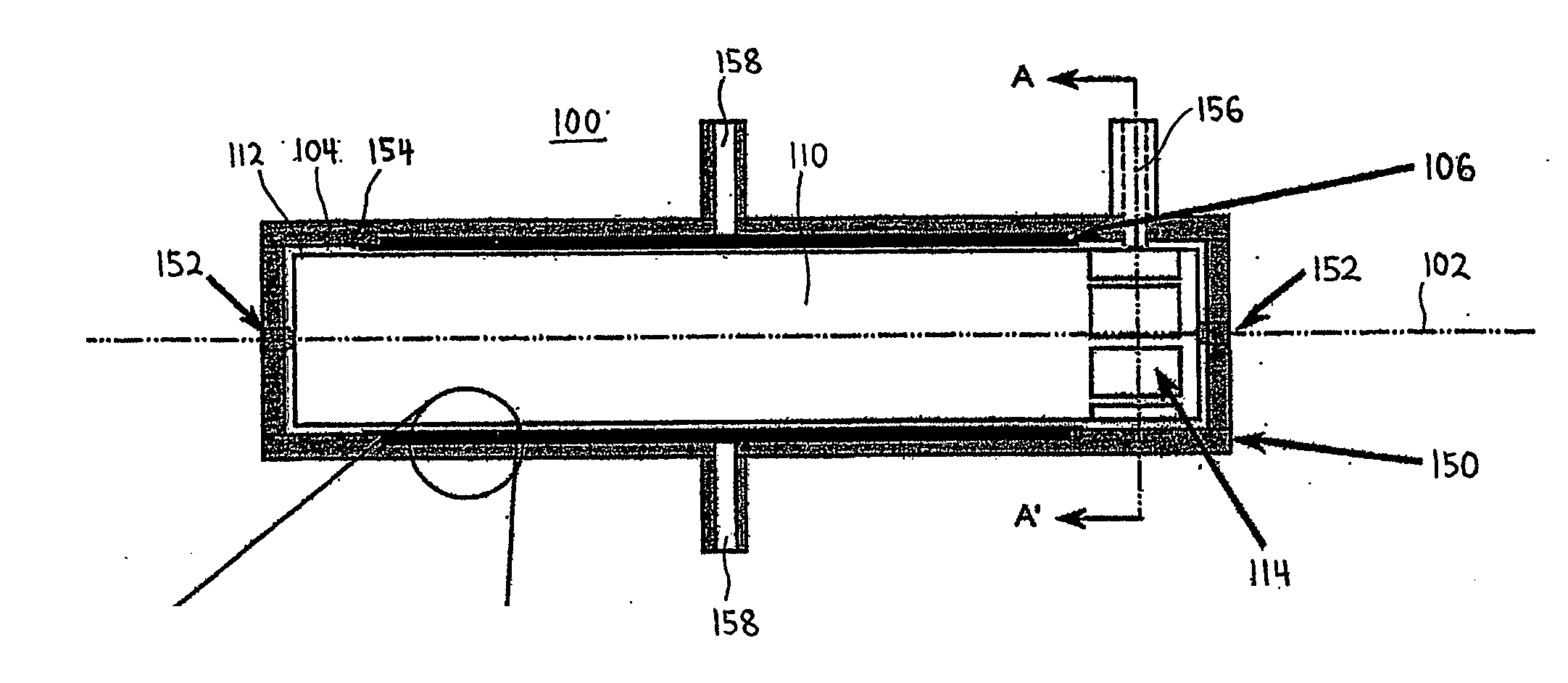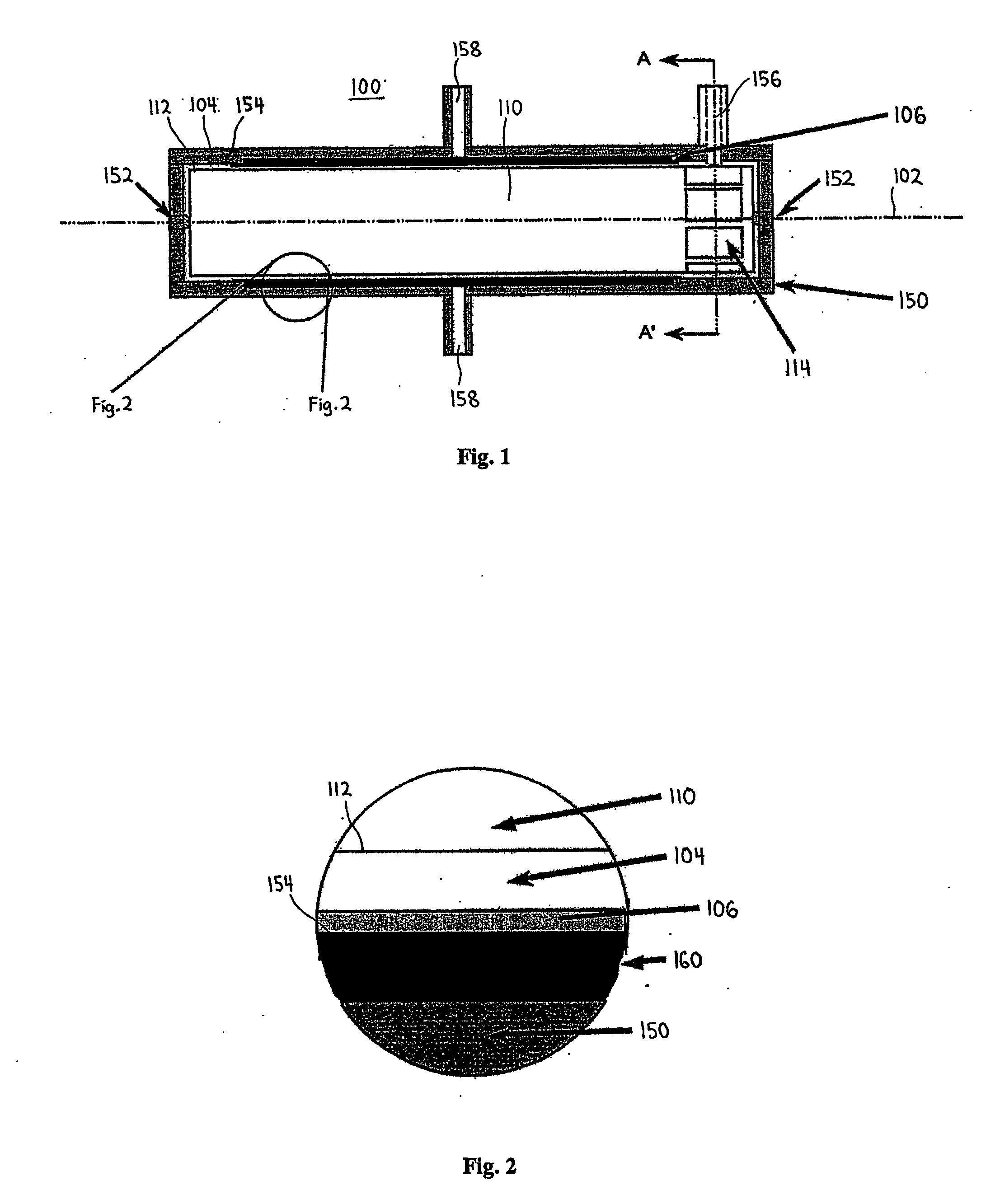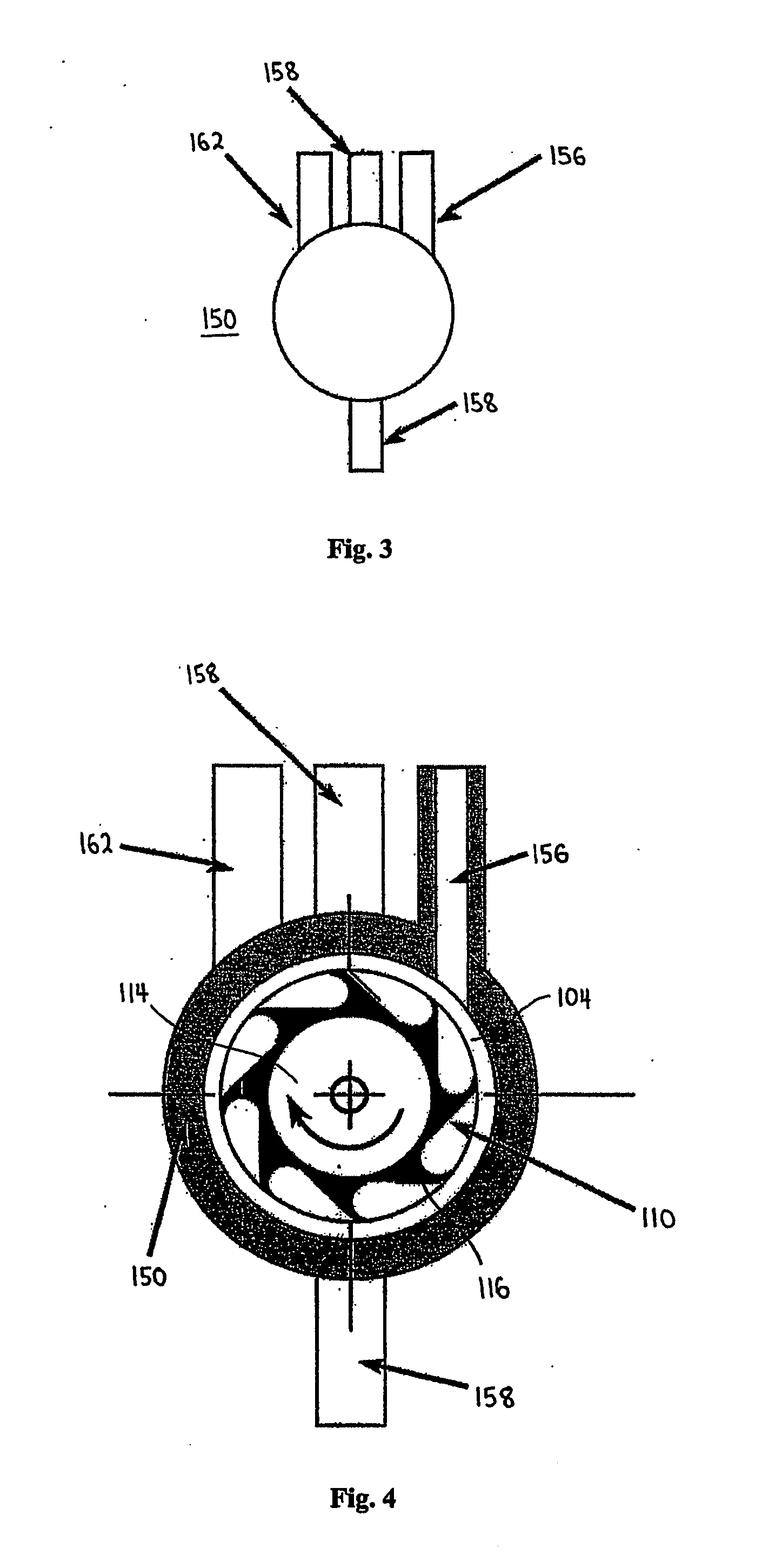Vortex enhanced filtration device and methods
a filtration device and filtration method technology, applied in centrifuges, separation processes, membranes, etc., can solve the problems of limiting the problem of filtration, filter clogging, and filtration performance decline, and achieve the effect of reducing concentration polarization
- Summary
- Abstract
- Description
- Claims
- Application Information
AI Technical Summary
Benefits of technology
Problems solved by technology
Method used
Image
Examples
Embodiment Construction
[0029]FIG. 1 is a sectional view of the rotational filtration device 100 according to one embodiment of the present invention. The sectional view shows the housing 150 of the rotational filtration device bisected along line A-A′, but the rotor 110 is shown intact. The rotational filtration device 100 comprises a rotor 110 arranged coaxially within the bore of a housing 150. In the illustrated embodiment both the rotor 110 and the bore are cylindrical. In one embodiment the rotor 110 is mounted on two posts 152 within the housing 150 along the central axis 102 of the rotational filtration device 100. These posts limit both the axial and the radial motion of the rotor 110. There is a gap 104 between the outer wall 112 of the rotor 110 and the inner wall 154 of the housing 150. The gap 104 extends evenly around the rotor 110. In another embodiment the posts 152 are not used and the rotor 110 is suspended within the housing 150 solely by the flow of process fluid through the gap 104.
[0...
PUM
| Property | Measurement | Unit |
|---|---|---|
| Pressure | aaaaa | aaaaa |
| Flow rate | aaaaa | aaaaa |
| Diameter | aaaaa | aaaaa |
Abstract
Description
Claims
Application Information
 Login to View More
Login to View More - R&D
- Intellectual Property
- Life Sciences
- Materials
- Tech Scout
- Unparalleled Data Quality
- Higher Quality Content
- 60% Fewer Hallucinations
Browse by: Latest US Patents, China's latest patents, Technical Efficacy Thesaurus, Application Domain, Technology Topic, Popular Technical Reports.
© 2025 PatSnap. All rights reserved.Legal|Privacy policy|Modern Slavery Act Transparency Statement|Sitemap|About US| Contact US: help@patsnap.com



